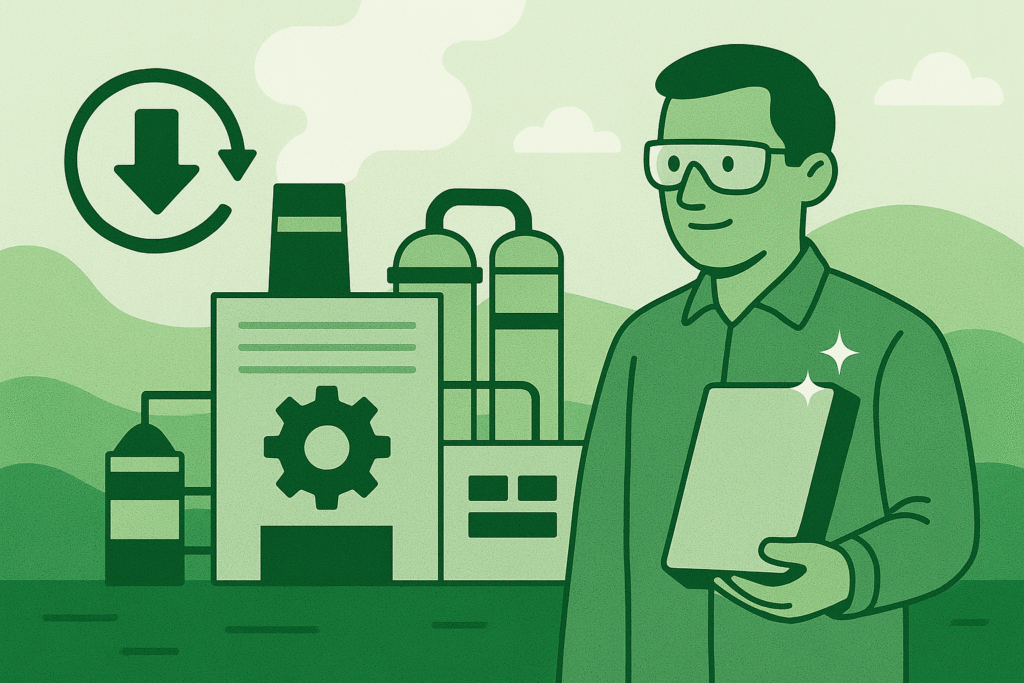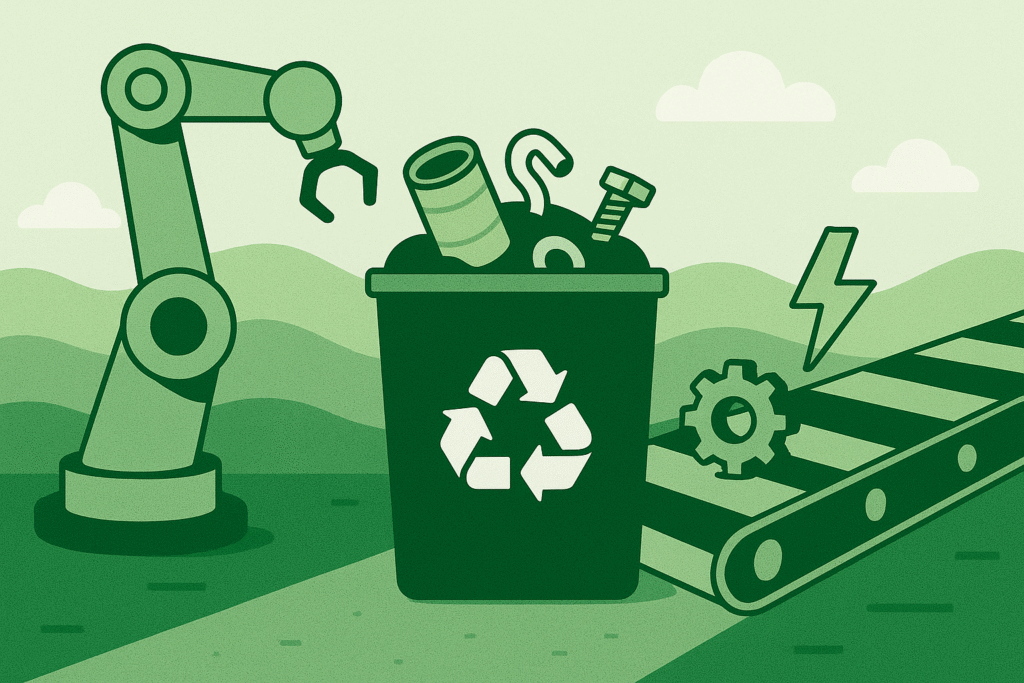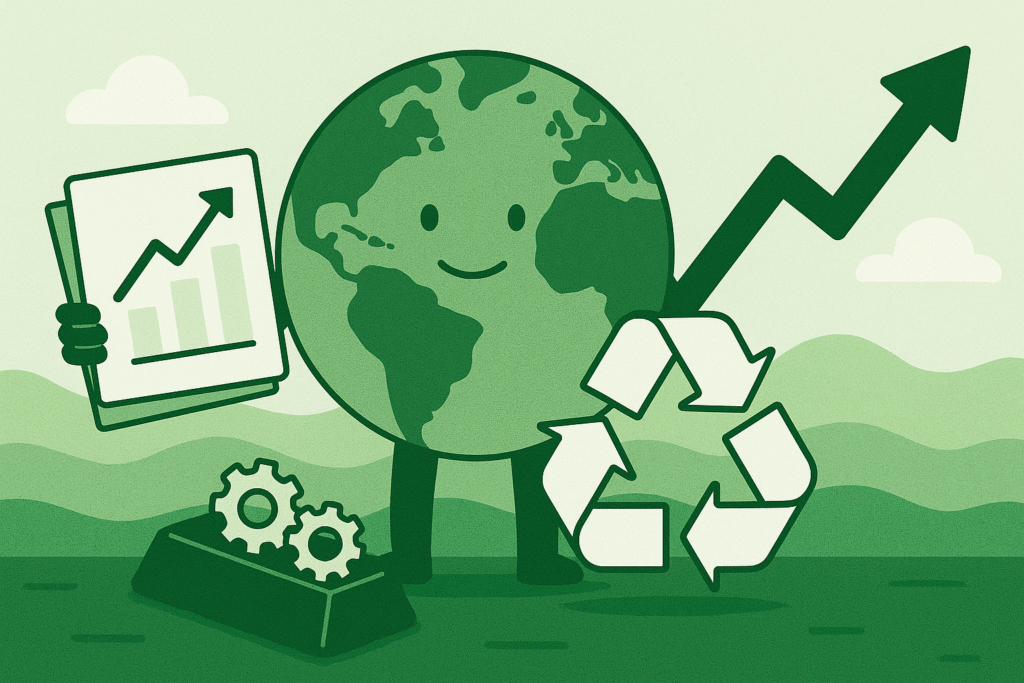Metal processing is essential for extracting and refining the elements that drive modern technology, but it often comes with environmental challenges. High energy consumption, greenhouse gas emissions, hazardous waste, and resource inefficiencies have historically plagued the industry. Today, however, modern innovations are transforming how metals are processed, making it more sustainable than ever. This article explores how new techniques and technologies reduce environmental impact in metal processing – with emphasis on rubidium, palladium, rhodium, platinum, and cesium – by improving energy efficiency, cutting emissions, minimizing hazardous waste, and embracing circular economy principles.
Environmental Challenges in Metal Processing
Before diving into solutions, it’s important to understand the key environmental challenges associated with traditional metal processing. These include:
- High Energy Use: Extracting and refining metals can be energy-intensive, often relying on fossil fuels and high-temperature processes, which leads to significant carbon dioxide emissions.
- Air and Water Pollution: Smelters and refineries may emit pollutants (such as sulfur dioxide or dust) and produce wastewater containing heavy metals or chemicals if not properly controlled.
- Hazardous Waste: Mining and processing generate tailings (finely ground rock residue) and chemical waste (spent acids, solvents, etc.) that can be toxic. These wastes risk contaminating soil and water if not managed responsibly.
- Resource Inefficiency: Valuable metals sometimes end up as “impurities” or in waste streams during processing. In the past, limited technology meant some rare elements were discarded rather than recovered, wasting resources and causing potential environmental harm.
Modern innovations aim to tackle each of these issues. From cutting energy requirements to capturing pollutants and recycling materials, the industry is moving toward cleaner and more efficient practices.
Energy-Efficient Extraction Techniques for Specialty Metals (Rubidium & Cesium)
Rubidium often occurs as a byproduct in lithium-rich mineral deposits (as seen in the ore above). Innovative extraction methods now target such overlooked resources efficiently. New techniques are drastically reducing the energy needed to extract rubidium and cesium, two alkali metals that historically were produced only in small quantities. Rubidium is frequently found alongside lithium in brine pools and pegmatite ores, yet it was long treated as an impurity to remove rather than a metal to recove. Today, researchers and companies are changing this approach with creative extraction methods that save energy and capture these valuable elements.
One breakthrough example is a process to extract rubidium from dried salt residues of brines instead of directly from liquid brine. Researchers found that by working with solid potassium chloride salts left after brine evaporation, they could recover rubidium while using 98% less energy compared to conventional brine processing. This massive improvement in energy efficiency means a far smaller carbon footprint for rubidium production. Likewise, cesium – often obtained from ores like pollucite or as a minor constituent in brines – benefits from advanced separation methods (such as solvent extraction and selective adsorption) that operate at lower temperatures and pressures, saving energy.
Modern extraction facilities also employ energy-saving measures such as heat recovery and process optimization. For instance, waste heat from one step can be reused to heat another, and electric-powered equipment (powered by renewable energy when available) can replace older fossil-fueled machinery. In the case of rubidium, a partnership in Australia used a direct extraction technique with membrane technology that recycles water throughout the process. By recycling water and limiting heating needs, this method not only saves energy but also integrates well with renewable energy sources (e.g., using solar electricity to run pumps and membranes). The result is that even traditionally “hard-to-get” metals like rubidium and cesium can be produced with minimal energy input and environmental impact.
It’s worth noting that because cesium mining and processing have been relatively small-scale historically, the overall environmental footprint has been minimal in the past. However, demand for cesium in applications like drilling fluids and electronics is slowly rising. By adopting these energy-efficient and innovative extraction techniques from the outset, the industry can scale up cesium production without a proportional increase in environmental impact – essentially doing more with less energy.
Cutting Emissions and Pollution in Precious Metal Processing (Platinum, Palladium & Rhodium)
The platinum group metals – platinum (Pt), palladium (Pd), and rhodium (Rh) – are highly valuable and used in critical applications (from catalytic converters to electronics). Traditional processing of these precious metals often involves high-temperature smelting of ores (which can release sulfur dioxide and other gases) followed by chemical refining. Innovations in processing technology are now enabling cleaner production with fewer emissions.
One major shift has been toward hydrometallurgical techniques (using aqueous chemistry at moderate temperatures) instead of purely pyrometallurgical smelting. By leaching metals from ores or recycled materials in liquid solutions and then refining them, producers can avoid some of the air pollution associated with furnaces. In fact, modern hydrometallurgy can achieve lower energy consumption and diminished gaseous emissions compared to traditional high-heat smelting. For example, instead of burning large amounts of fuel to melt ore, processes may use acidic solutions to dissolve platinum and palladium out of crushed ore or spent catalysts. This means less fuel burned and therefore less carbon dioxide and sulfur oxide emitted.
When smelting is used, newer furnace designs and pollution controls make a big difference. Electric arc furnaces and flash smelting technologies rapidly heat concentrates using electrical energy and the ore’s own chemical energy, reducing the need for additional fuel. Crucially, modern precious metal smelters are equipped with emission-capture systems – for instance, sulfur dioxide gas is captured and converted to sulfuric acid rather than vented to the atmosphere. This not only prevents acid rain pollution but also creates a useful byproduct (sulfuric acid is a valuable industrial chemical). Similarly, dust and particulate emissions are curbed by high-efficiency filters and scrubbers, ensuring that metals like rhodium or palladium aren’t inadvertently released into the air or surrounding soil.
Another innovation is the use of automation and digital controls to optimize process conditions. Smart sensors and AI-driven control systems can fine-tune temperature, airflow, and other parameters in real time, keeping the process in the cleanest, most efficient range. This reduces incidents of incomplete reactions or “off-spec” batches that might require reprocessing (which would mean extra energy and emissions). In short, the production of platinum, palladium, and rhodium is becoming cleaner through both new chemical processes and better engineering controls that tackle emissions at the source.
Minimizing Hazardous Waste and Byproducts
In addition to air emissions, metal processing historically produced liquid and solid wastes that pose environmental risks. Today’s efficient metal processing puts strong emphasis on reducing hazardous waste generation and safely handling any unavoidable waste.
One key strategy is moving toward closed-loop systems in processing plants. Instead of using chemicals once and discarding them, modern facilities often recycle reagents like acids and water. For example, the rubidium extraction technique mentioned earlier uses a weakly acidic solution to selectively pull out rubidium; because the solution is mild, it’s easier to neutralize and reuse, leaving very little toxic residue. In older processes, strong acids (e.g. aqua regia or cyanide solutions for precious metals) would create large volumes of hazardous liquid waste that needed treatment. New approaches like ion exchange resins, organic solvent extraction with recyclable solvents, or even deep eutectic solvents (a type of green solvent) allow recovery of metals with minimal leftover waste, and the chemicals can often be recycled for the next batch.
Solid waste, such as mine tailings or slag from furnaces, is another focus. Tailings can contain unrecovered metals and reactive minerals that could leach into the environment. Companies are increasingly treating tailings not as trash but as a resource to be reprocessed. Recovering additional metal values from tailings not only boosts overall yield but also stabilizes the waste. Indeed, reprocessing mine tailings can extract remaining valuable metals from what was once waste, reducing the toxicity of the residual material. In some innovative projects, scientists have even managed to trap carbon dioxide by reacting it with certain mine tailings (carbonating the waste rock) – thereby capturing CO₂ while neutralizing the tailings. While such methods are still experimental, they point to a future where even the leftovers of metal processing help remediate the environment.
For the platinum group metals, hazardous waste minimization also means dealing responsibly with any associated elements. PGM ores can be associated with elements like arsenic, lead, or chromium in small amounts. Modern refining processes often include steps to remove or stabilize these potentially harmful elements. The removed impurities might be processed separately (for example, arsenic can be converted into stable glass or ceramic form for safe disposal). By isolating and treating such byproducts, processors prevent them from entering waterways or soils.
Finally, improved storage and disposal practices greatly reduce risk. Facilities now use lined and reinforced tailings ponds, dry stacking of filtered tailings (to prevent dam failures and leaching), and thorough neutralization of any acidic wastes. Through these measures, hazardous byproducts of metal processing are minimized at the source, and any that are produced are handled in an environmentally responsible manner.
Embracing the Circular Economy: Recycling and Reuse
Perhaps the most impactful way to reduce the environmental footprint of metal processing is to keep the metals circulating in use for as long as possible. Circular economy principles – notably recycling and reusing materials – ensure that we get maximum value from metals with minimal new mining and processing. This is especially true for precious and rare metals like Pt, Pd, Rh, Rb, and Cs, where the incentive to recover and reuse them is high due to their value and scarcity.
Recycling is already a success story for platinum group metals. Catalytic converters from vehicles, for example, are rich in platinum, palladium, and rhodium. Instead of those metals going to waste when a car is scrapped, they are removed and refined back into pure metal for reuse. In fact, recycling of palladium (and other PGMs) offers a sustainable, circular alternative to mining, since secondary sources often have higher concentrations of these metals and a reduced environmental impact. The industry has developed efficient recycling routes that combine pyrometallurgy and hydrometallurgy to recover over 90% of the PGMs from spent catalysts. This means far less new ore needs to be mined to supply industry demand.
The scale of PGM recycling today is remarkable – by some estimates, almost 60% of the platinum group metals used in new products each year is recycled metal (either from open-loop recycling like scrap dealers or closed-loop recycling within companies). For platinum alone, about 20–25% of the annual supply now comes from recycled sources, which comes with significantly lower CO₂ emissions and cost compared to primary production from mines. These recycled metals are just as pure and effective as mined metal, so there is no quality downside. Each ounce of platinum or palladium recovered from old equipment is an ounce that didn’t require new mining, with all the energy use and land disturbance that mining entails.
Recycling and reuse aren’t limited to PGMs. Cesium and rubidium, once recovered, can also be reused in industrial processes. For instance, cesium formate fluids used in oil drilling can be recovered and recycled due to their high cost – this practice prevents the heavy metal salts from simply being discarded after use. Likewise, rubidium in specialty chemicals or electronics can often be precipitated out and reused when those products reach end-of-life. Although the volumes for Rb and Cs are smaller, the principle is the same: keep these metals in circulation to avoid the environmental costs of fresh extraction.
Beyond recycling finished products, circular economy thinking is applied within the processing cycle itself. Internal recycling is common – for example, reusing metal scraps, off-cuts, or process by-products in the production cycle. A metals refinery might take its own filtercakes or sludges that are rich in precious metal and feed them back into the refining process to recover every last bit of value. Water used in processing is treated and reused, and reagents are regenerated. In some modern facilities, the goal is “zero waste” – virtually every output is either a saleable product or is reintroduced into the process.
Conclusion: Collaboration for a Greener Metal Industry
From novel extraction methods that save energy to closed-loop systems that recycle water and metals, efficient metal processing is proving to be a powerful lever for reducing environmental impact. The examples of rubidium, palladium, rhodium, platinum, and cesium show how both common and niche metals can be produced more sustainably. By investing in energy-efficient technology, capturing and curbing emissions, minimizing hazardous waste, and wholeheartedly embracing recycling, the metal industry can significantly shrink its ecological footprint.
For industry partners and stakeholders, these innovations are not just about regulatory compliance or corporate responsibility – they also make good business sense. Efficient processes often lower costs (through energy savings and material recovery) and secure supply chains (through recycling and resource efficiency). In a world increasingly focused on sustainability, companies that adopt greener metal processing can gain a competitive edge and build stronger partnerships.
The journey toward sustainable metal processing is ongoing, and it benefits greatly from collaboration across the industry. Mining companies, refiners, technology providers, and end-users are coming together to share best practices and develop even cleaner techniques. By continuing on this path, we can ensure that the metals crucial to modern life are produced in ways that respect the planet, reduce waste, and preserve resources for future generations. The efficient, low-impact processing of rubidium, palladium, rhodium, platinum, cesium, and other metals stands as a testament to innovation – demonstrating that with the right approaches, we truly can reduce environmental impact through efficient metal processing.Sources: Modern industry reports and research on sustainable metal extraction and refining were used in preparing this article. Key references include recent studies on rubidium extraction efficiency, analyses of hydrometallurgical vs. pyrometallurgical emissions, and data on the recycling rates of platinum group metals, among others.



